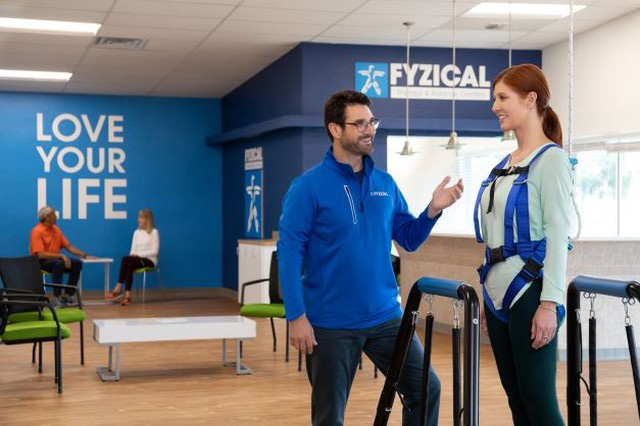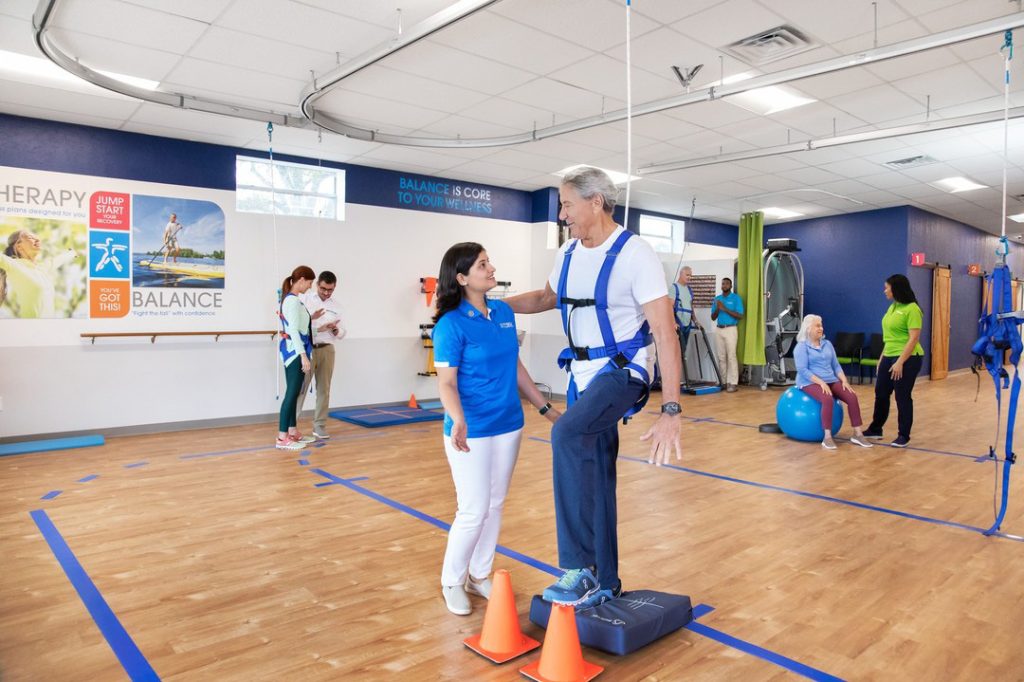FYZICAL Therapy & Balance Center Coral Springs
Contact: (954) 779-4549 / coralsprings@fyzical.com



Dizziness Physical Therapy: Effective Exercises for Relief
Dizziness can be unsettling, causing discomfort and disrupting daily life. Whether it’s due to a spinning sensation, lightheadedness, or balance issues, dizziness affects many people at some point. Dizziness physical therapy offers a solution by targeting the root causes and providing effective exercises to alleviate symptoms. This therapy retrains the brain and body, improving balance and mobility. With consistent therapy, many individuals experience significant relief, regain confidence, and lead a more active life. This blog explores how dizziness physical therapy works, its benefits, and how it can help you or a loved one.
Introduction to Dizziness Physical Therapy
Dizziness can interfere with various aspects of life, such as work, social activities, and even simple tasks. The fear of falling may also limit mobility. Physical therapy helps manage and reduce dizziness by improving balance and strengthening muscles. Therapists use targeted exercises and techniques that retrain the body’s balance system, offering a safe and effective way to treat dizziness.
There are several possible causes of dizziness, including:
- Inner ear problems such as infections or fluid buildup
- Poor blood flow, often felt when standing up too quickly
- Medications that cause dizziness as a side effect
- Anxiety and stress-related dizziness
Understanding the cause of dizziness helps in developing an appropriate treatment plan, and physical therapy is a crucial step in managing these symptoms.
Benefits of Physical Therapy for Dizziness
Improving Balance:
One of the primary goals of dizziness physical therapy is to improve balance. By strengthening muscles and enhancing coordination, physical therapists help retrain the brain to better manage balance, reducing the risk of falls and boosting confidence in movement.
Enhancing Mobility:
Physical therapy also focuses on improving mobility, enabling individuals to walk and move without fear. By teaching techniques to handle dizziness safely, therapists help patients regain the ability to perform daily tasks with more ease and confidence.
Initial Assessment and Diagnosis
Before starting treatment, it’s essential to understand the root cause of dizziness. A thorough assessment helps identify specific issues, including:
- Eye movements: Doctors may assess how the eyes react to head movements.
- Balance tests: These check for issues with standing, walking, or maintaining posture.
- Walking patterns and head movements: Simple tests to observe symptoms during everyday movements.
These assessments allow therapists to create a tailored treatment plan that best addresses the underlying causes of dizziness.
Vestibular Rehabilitation Exercises
One of the most effective treatments for dizziness is vestibular rehabilitation. These exercises help improve control over eye movements and head positioning, thereby reducing dizziness and vertigo.
Gaze Stabilization Exercises:
- Focus on a target, keeping your eyes on it while moving your head side to side. Do this for a minute and repeat several times daily. This exercise can improve eye control and reduce dizziness.
Head Movement Exercises:
- Sit down and slowly turn your head left to right, then look up and down. Perform each movement for a minute and repeat daily. These exercises help reduce vertigo and improve balance.
Balance Training Techniques
Static Balance Exercises:
- Stand with your feet together and hold the position for 30 seconds. Challenge yourself by closing your eyes or using a chair for support. Repeat daily for the best results.
One-Leg Stands:
- Stand on one leg for 15 seconds and then switch to the other leg. This exercise strengthens the core and helps improve balance.
Dynamic Balance Drills:
- Walk in a straight line, heel to toe, to improve coordination. Try side-stepping slowly, or practice marching in place by lifting your knees high and swinging your arms naturally. These drills boost balance and confidence.
Strengthening and Conditioning
Building strength in the legs and core is essential for improving balance and reducing dizziness. Regular exercises help stabilize the body and provide better support.
Leg Strengthening:
- Squats and lunges help strengthen the thighs and calves, reducing dizziness by improving leg strength and stability.
Core Strengthening:
- Planks and bridges are excellent core exercises. Planks help with stability, while bridges strengthen the lower back and hips, which are key to maintaining a stable posture.
Breathing and Relaxation Exercises
Physical therapy for dizziness often includes breathing and relaxation exercises to reduce stress and improve balance. These techniques help calm the nervous system and reduce dizziness symptoms.
Deep Breathing Techniques:
- Sit or lie flat, close your eyes, and take a deep breath in through your nose. Hold for 3 seconds and then slowly exhale through your mouth. Do this for 5 minutes to reduce dizziness and stay calm.
Progressive Muscle Relaxation:
- Tense each muscle group for 5 seconds and then release. Start from your feet and work your way up to your face. This technique reduces stress and eases dizziness.
Lifestyle Modifications
Certain lifestyle changes can help manage dizziness and improve overall well-being:
- Eat a balanced diet and stay hydrated, as dehydration can worsen dizziness.
- Avoid excessive caffeine and alcohol as they can trigger dizziness.
- Get adequate sleep each night, as poor sleep can exacerbate dizziness.
- Exercise regularly to maintain strength and flexibility. Walking, yoga, and tai chi are great activities that improve balance and stability.
Tips for Preventing Dizziness
There are several strategies for reducing dizziness and preventing it from recurring:
- Identify and avoid triggers, such as bright lights or sudden movements.
- Stay hydrated to prevent dehydration.
- Sleep well to reduce the likelihood of dizziness.
- Engage in regular exercise, including balance training and stretching.
Conclusion and Future Outlook
Dizziness physical therapy offers long-term benefits, from improving balance and mobility to enhancing confidence and reducing the fear of falling. With consistent therapy, patients can experience significant improvements in their quality of life. As technology continues to advance, new tools like virtual reality and wearable devices are being incorporated into physical therapy, making exercises more engaging and providing real-time progress tracking for better treatment plans.
If you or a loved one is struggling with dizziness, consider seeking physical therapy for relief. With professional guidance, personalized exercises, and lifestyle adjustments, you can regain control of your balance and live a more fulfilling life. Progress takes time, but the benefits are well worth the effort.
Frequently Asked Questions
What Physical Therapy Do They Do for Dizziness?
Physical therapy for dizziness includes vestibular rehabilitation exercises, balance training, gaze stabilization, and canalith repositioning maneuvers.
What Is the Best Exercise for Dizziness?
The best exercise for dizziness is the Epley maneuver, which helps reposition crystals in the inner ear to reduce vertigo symptoms. Always consult a doctor before starting any exercise.
What Are Three Symptoms of Vestibular Dysfunction?
Three symptoms of vestibular dysfunction include dizziness, balance issues, and vertigo. Seek medical advice for a proper diagnosis.
What Physical Activity Is Good for Dizziness?
Walking, yoga, and tai chi are great activities that improve balance and stability, which can help manage dizziness.
Conclusion
Dizziness physical therapy can be highly effective in improving balance, stability, and quality of life. With regular practice, patients often experience relief from dizziness and regain confidence in daily activities. Always consult a therapist for personalized treatment and guidance. Don’t let dizziness limit your life—take the first step toward relief today!